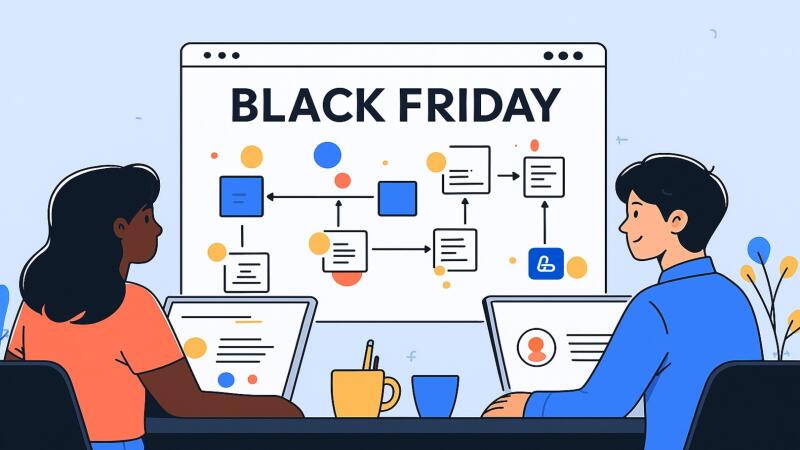Black Friday is that crucial time of year when website traffic and sales can skyrocket. But in the lead-up to the sale season, every SEO misstep can mean significant lost revenue. Customers are actively hunting for discounts, and search engines track a massive spike in product-specific queries. That's why your usual SEO playbook often falls short – you need a targeted approach.
A strong Black Friday SEO strategy helps you optimize your content and technical setup ahead of time, ensuring that traffic actually converts into sales. It's not just about visibility – it's a calculated plan that accounts for seasonal audience behavior and search engine algorithm shifts. In this guide, we'll share practical Black Friday SEO tips to get you ready.
Your 1-Month Game Plan: Building a Solid Black Friday Foundation
With one month to go, it's crunch time. This isn't the moment for major overhauls or delayed fixes – every change needs to be precise and intentional. A well-executed Black Friday SEO strategy at this stage prepares your site for the incoming surge and strengthens your search positions.
How Black Friday SEO is Different from Business as Usual
Standard SEO focuses on steady, long-term queries and gradual ranking improvements. Black Friday SEO, on the other hand, is a sprint. Speed and accuracy are everything. The goal isn't just to rank – it's to rank at the right time, before the demand spike fades.
Shoppers behave differently during this period. They skip the long reads and look for specifics: "smartphone deals," "best Black Friday offers," "discounted TVs." Queries get shorter, and decisions happen faster.
Search demand shifts, too. Keywords with terms like "Black Friday," "sale," or "deals" explode a couple of weeks before the event. If your pages are ready early, search engines can index them and push you ahead of the competition.
Want to dig deeper into seasonal campaigns? Check out our guide on seasonal SEO – it's a solid methodology for any peak period, not just Black Friday.
Review Last Year's Performance and Build Your Keyword List
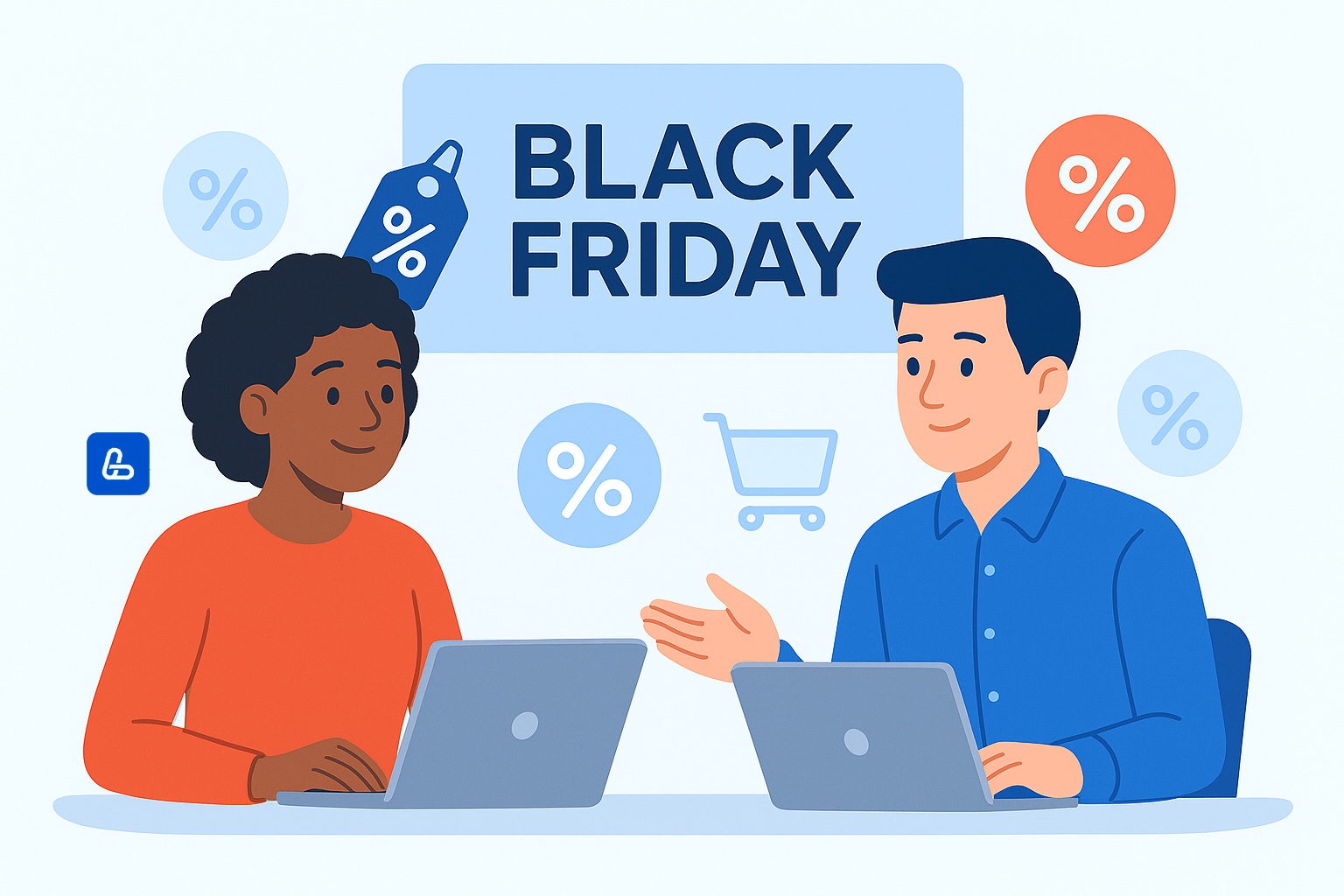
Start by analyzing last year's campaign. Identify which products and pages attracted the most traffic, which search terms drove conversions, and where you lost ground.
Key steps for this phase:
- Pull reports from Google Analytics and Search Console.
- Pinpoint the key queries that already led to sales.
- Discover new trends and interest spikes in related categories.
Compile a list of last year's high-performing keywords, then layer in new ones tied to this year's trends – new models, brands, or categories. Tools like Ahrefs, Serpstat, and Semrush can help.
Pro tip: Don't just copy-paste last year's content and keywords. The competitive landscape shifts, and user search patterns evolve. Your updated keyword list should reflect the latest data and trends. This sets the stage for your Black Friday SEO strategy.
Once your keywords are set, you can move on to fine-tuning your content and technical elements.
Conversion-Focused Content: Creating What Shoppers Actually Want
Great content during sale season does two things: it pulls in traffic and turns visitors into buyers. A generic "Up to 70% Off" banner will just get lost in the noise. You need a content strategy that answers what people are searching for and helps them choose.
Before you begin, map out what you'll create, where it will live, and how it connects. This builds a clear path: article → category → product page → purchase.
Picking the Right Format: Guides, Catalogs, or News – What Converts Best?
Each format serves a different purpose. Your choice depends on what you're selling.
Guides and Roundups
Ideal for complex or high-ticket items. Think "How to Pick the Right TV for Black Friday 2025" or "TOP 10 Laptops on Sale." These pieces build trust and help users decide. Be sure to include product links and clear calls to action.
Catalogs and Category Pages
These are your sales workhorses. Update titles, meta descriptions, and filters ahead of time. Work in words like "sale," "discount," and "Black Friday" directly into category names. Search engines pick these up fast, helping you rank for seasonal searches.
News and Announcements
Perfect for boosting relevance. A short post like "Black Friday Is Live: 70% Off Electronics" acts as a fresh signal for search algorithms. Plus, you can use these posts for internal linking to key sale pages.
Pro tip: Mix and match formats. Use blog guides, updated categories, and news announcements together. This creates multiple touchpoints in search results and drives more traffic.
On-Page Optimization: Working Keywords In Naturally
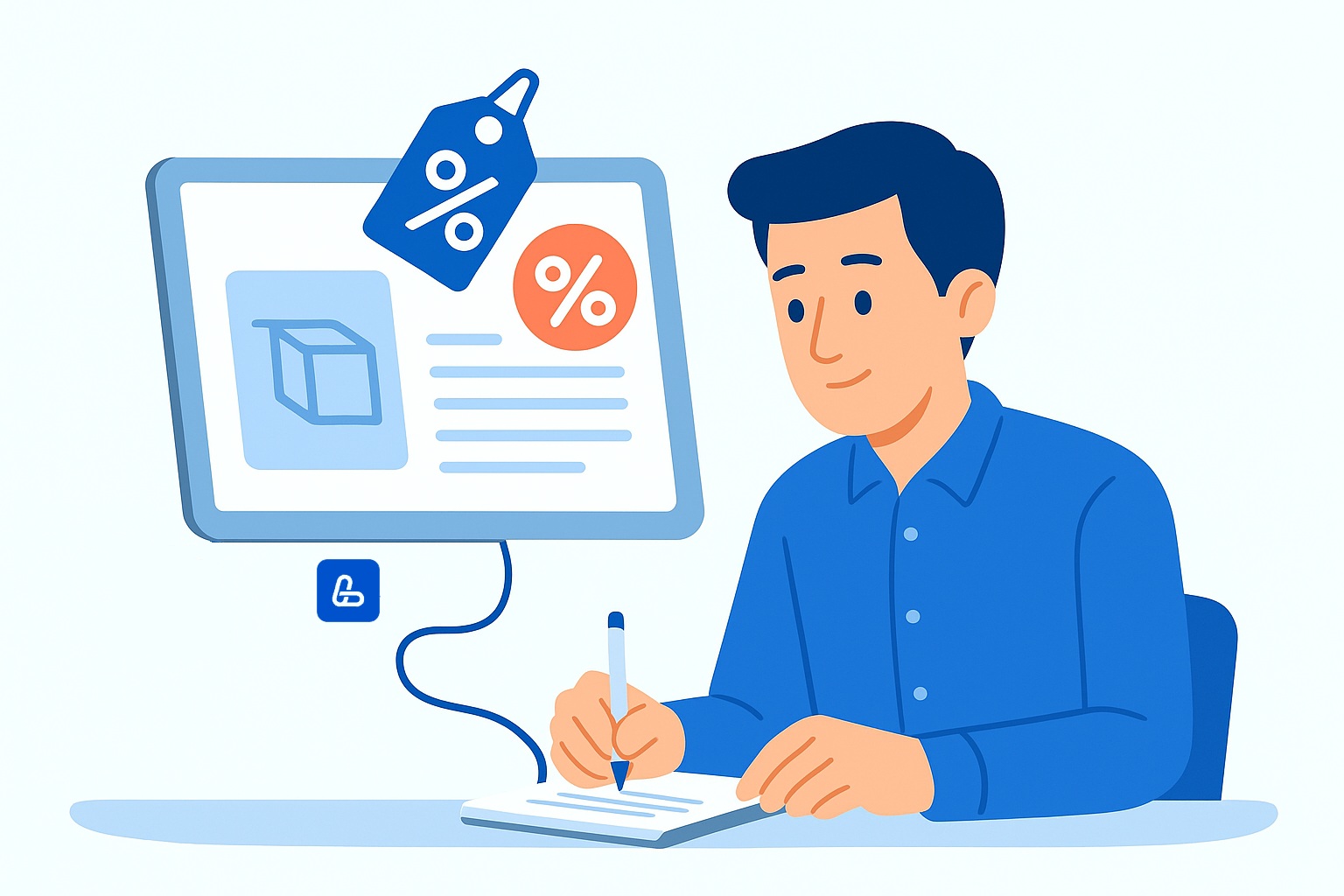
Once your content is ready, make sure search engines understand it – without sacrificing readability. This is key to increasing traffic on Black Friday through smart copywriting.
Here's a straightforward approach:
- Break text into scannable sections. Each block should cover one idea. This keeps readers engaged.
- Include keywords naturally. Use them 1–3 times in the body – any more can feel spammy.
- Optimize subheadings. Work keywords into H2s and H3s to boost relevance.
- Don't forget image alt text. Describe the product and mention Black Friday where it fits.
- Add schema markup. Use structured data to highlight prices, discounts, and stock status. This can lift your click-through rate from search results.
Here's an example of a product description done right:
"Samsung Galaxy S23 smartphone with 30% off for Black Friday. Delivery in 1 day. Limited stock."
It reads naturally but includes key phrases and urgency. You improve rankings without over-optimizing.
Also, consider emotional triggers like "buy now," "limited quantity," or "sale ends soon." These small touches can boost conversion rates.
Internal Linking: Guiding Visitors Toward a Purchase
When your content is live, connect related pages thoughtfully. This helps both users and SEO. Internal links create pathways that lead visitors – and search engines – to important pages.
A few basic rules:
- Link from blog posts to relevant category or sale pages. For example, link from "How to Choose a Laptop for Black Friday" to your "Laptop Deals" category.
- Add links in product descriptions to accessories or related items.
- End articles with a clear CTA pointing to a landing page.
Your internal link structure should work like a funnel: visitor lands on a blog post → clicks to a category → views a product → buys.
Avoid dead ends. If someone hits a broken or irrelevant page, they'll leave. Every link should guide them toward a purchase or a clear next step.
Well-placed links also spread link equity across your site, helping important pages rank better – especially critical before the shopping rush.
Landing Page Prep: Structure, Tags, and Everything in Between
A well-optimized landing page is essential. Start with page titles and meta descriptions. Make sure they include relevant keywords tied to discounts and promotions. For example: "Buy a Smartphone on Sale – Black Friday 2025." Adding a time limit can boost clicks.
Next, review your page content. Cut the fluff and focus on key details: discounts, delivery options, promotion dates. Add a countdown timer, a clear CTA, and customer reviews. Shoppers should instantly see the offer and know how long they have.
Keep the layout clean and intuitive. Here's a quick reference:
| Element | Action | Why It Matters |
|---|---|---|
| H1 and Title | Include keywords | Boosts relevance |
| CTA Button | Place near the top | Increases clicks |
| Images & Banners | Compress for speed | Faster loading |
| Customer Reviews | Show genuine ones with photos | Builds trust |
| Internal Links | Connect to related categories | Encourages exploration |
If you're building new pages for the promotion, make sure they get indexed early. Search engines need time to process updates – don't wait until the last minute.
Speed and Mobile Experience: Don't Lose Traffic on the Big Day
Even the best content and Black Friday SEO won't save you if your site is slow. On the sale day, visitors won't wait around – if a page lags, they're gone. Page speed and mobile usability often decide who gets the sale.
Before the rush, test the technical side: how fast do pages load? Is the mobile experience smooth? Can your server handle a traffic spike? These factors impact both rankings and conversions.
Getting Your Site Up to Speed: Core Web Vitals
Google now judges your site partly on speed metrics. The Core Web Vitals report focuses on three key areas:
| Metric | What It Measures | Target |
|---|---|---|
| LCP (Largest Contentful Paint) | Time to load main content | Under 2.5 sec |
| FID (First Input Delay) | Delay before the site responds to a click | Under 100 ms |
| CLS (Cumulative Layout Shift) | Visual stability during load | Under 0.1 |
Check your stats in Google PageSpeed Insights or Search Console.
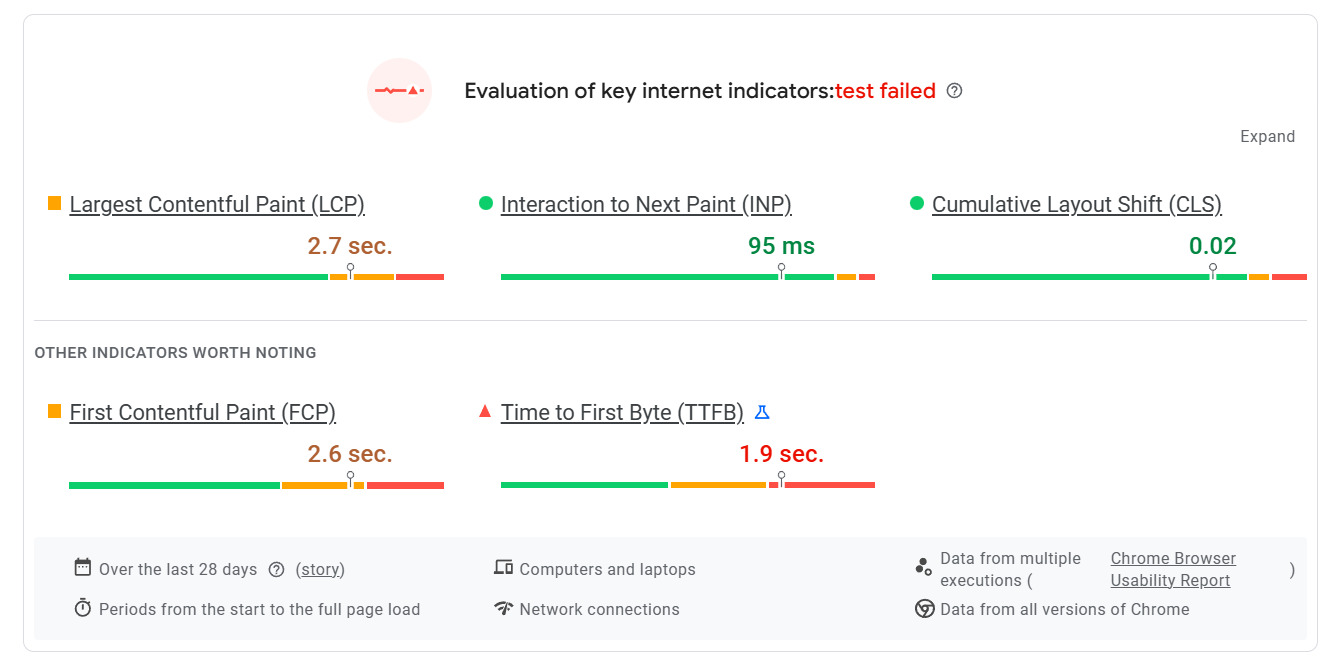
To improve your scores:
- Compress images (try TinyPNG or Squoosh).
- Enable lazy loading for below-the-fold images.
- Move heavy scripts toward the bottom of the page.
- Set up browser caching.
- Use modern image formats like WebP or AVIF.
If your report shows red, don't put off fixes. Speed optimization isn't just a technical detail – it's part of your Black Friday SEO audit. A fast site keeps shoppers engaged and can improve search visibility.
Mobile Testing: Make Buying Effortless
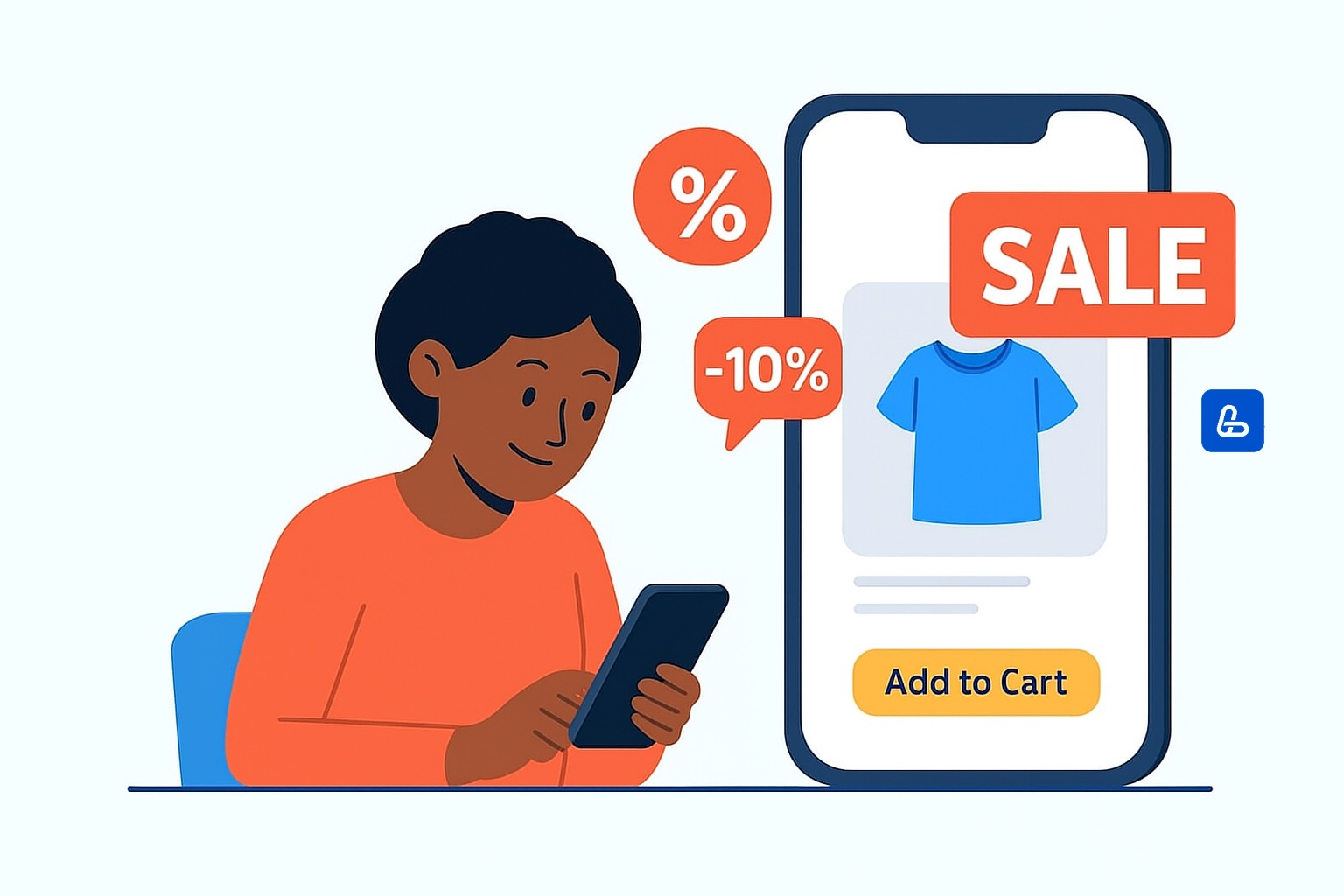
Most people shop from their phones. Your mobile site shouldn't just be "adapted" – it should feel effortless: quick, intuitive, and frictionless.
Check that:
- Buttons are big enough to tap easily.
- Menus work smoothly without overlapping elements.
- Filters and sorting functions perform correctly.
- Text is readable without zooming.
- The "Buy" or "Add to Cart" button is visible right after the product info.
Test the site manually on different devices. Also, streamline the checkout process. If buyers have to navigate multiple screens and fill out lengthy forms, they'll abandon their carts. Offer a one-click buy option or a simplified checkout form.
Mobile UX is a core part of how to prepare for Black Friday SEO. If the buying process is easy, shoppers won't go looking elsewhere.
Infrastructure Check: Caching and CDN
On the sale day, traffic can jump 5–10 times. An unprepared server might buckle. Plan your infrastructure ahead of time to avoid losing customers.
First, set up caching. Store static elements like images, CSS, and scripts on the user's side. This lightens the load and speeds up repeat visits.
Second, use a CDN (Content Delivery Network). Services like Cloudflare, Fastly, or BunnyCDN serve your content from servers around the world. Pages load faster, no matter where your visitors are.
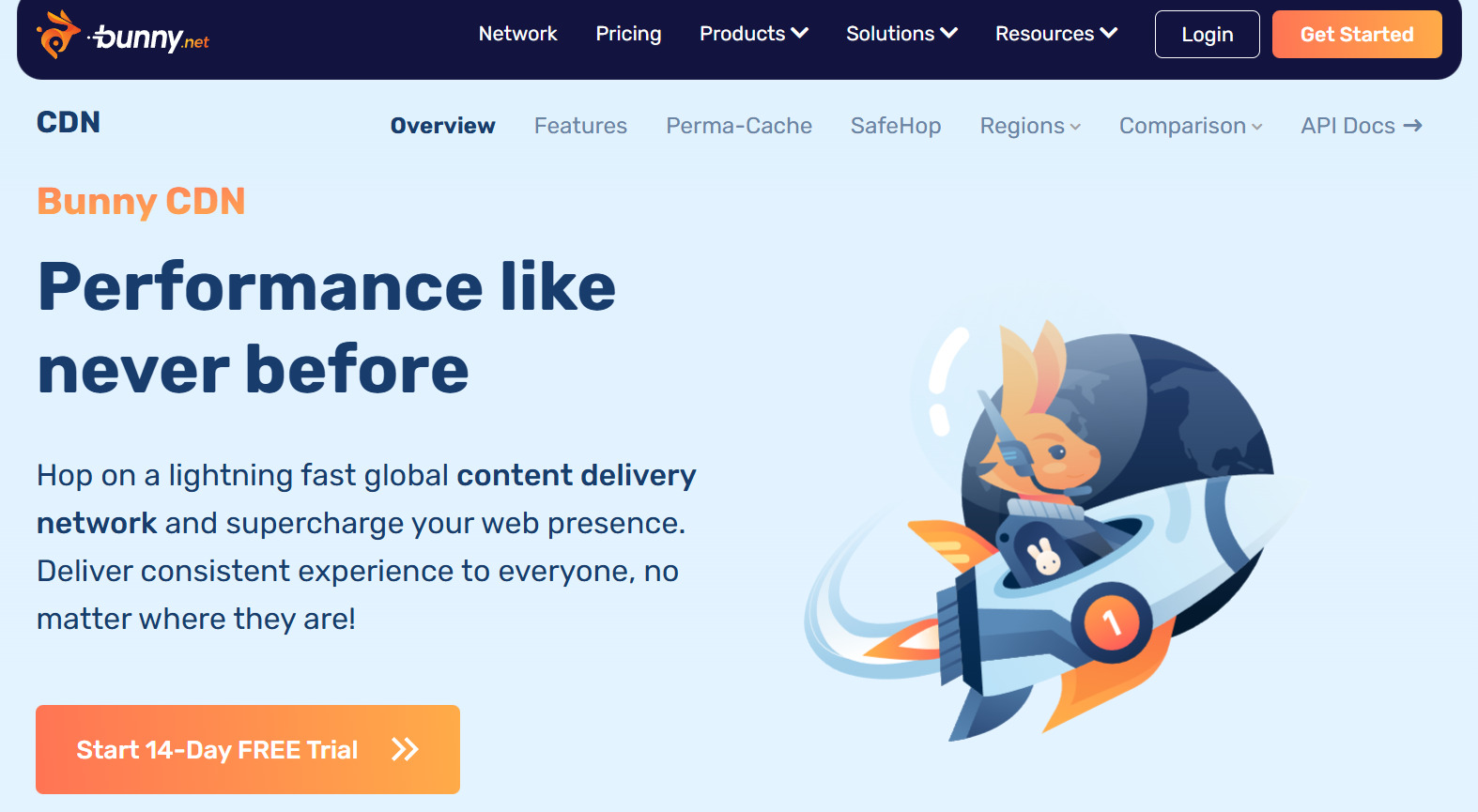
It's also smart to verify:
- Your hosting resource limits.
- Whether you can scale up quickly during peak traffic.
- Your backup plan – like a simplified landing page with key offers if the main site goes down.
Before the sale, run load tests with tools like Loader.io or Apache JMeter to spot weaknesses.
Speed and stability build trust. Even with the best deals, visitors won't wait for a slow site. That's why Black Friday SEO best practices cover not just keywords and content, but technical readiness, too.
When your site loads in a second and works beautifully on any device, you hold onto more traffic and sales. That's what separates prepared sites from those that crash under pressure.
Reaching Your Audience: Promotion Beyond Your Site
Once your site is optimized, it's time to look outward. During sale season, don't just wait for search traffic – bring shoppers in from other channels. This is a key part of Black Friday landing page optimization, since external mentions can boost your site's overall authority.
Sharing Your Best Deals with Reputable Media
Before the sale kicks off, get the word out on platforms your audience already trusts. Think news sites, niche blogs, and deal aggregators.
This kind of exposure offers three big benefits:
- Broader reach. People hear about your sale even if they aren't actively searching.
- Quality backlinks. Links from authoritative sites strengthen your SEO.
- Increased credibility. When trusted sites feature you, shoppers see your brand as more reliable.
Consider these formats:
- Press releases with promo details and terms.
- "Best Black Friday Offers" roundups.
- Collaborations with niche publishers.
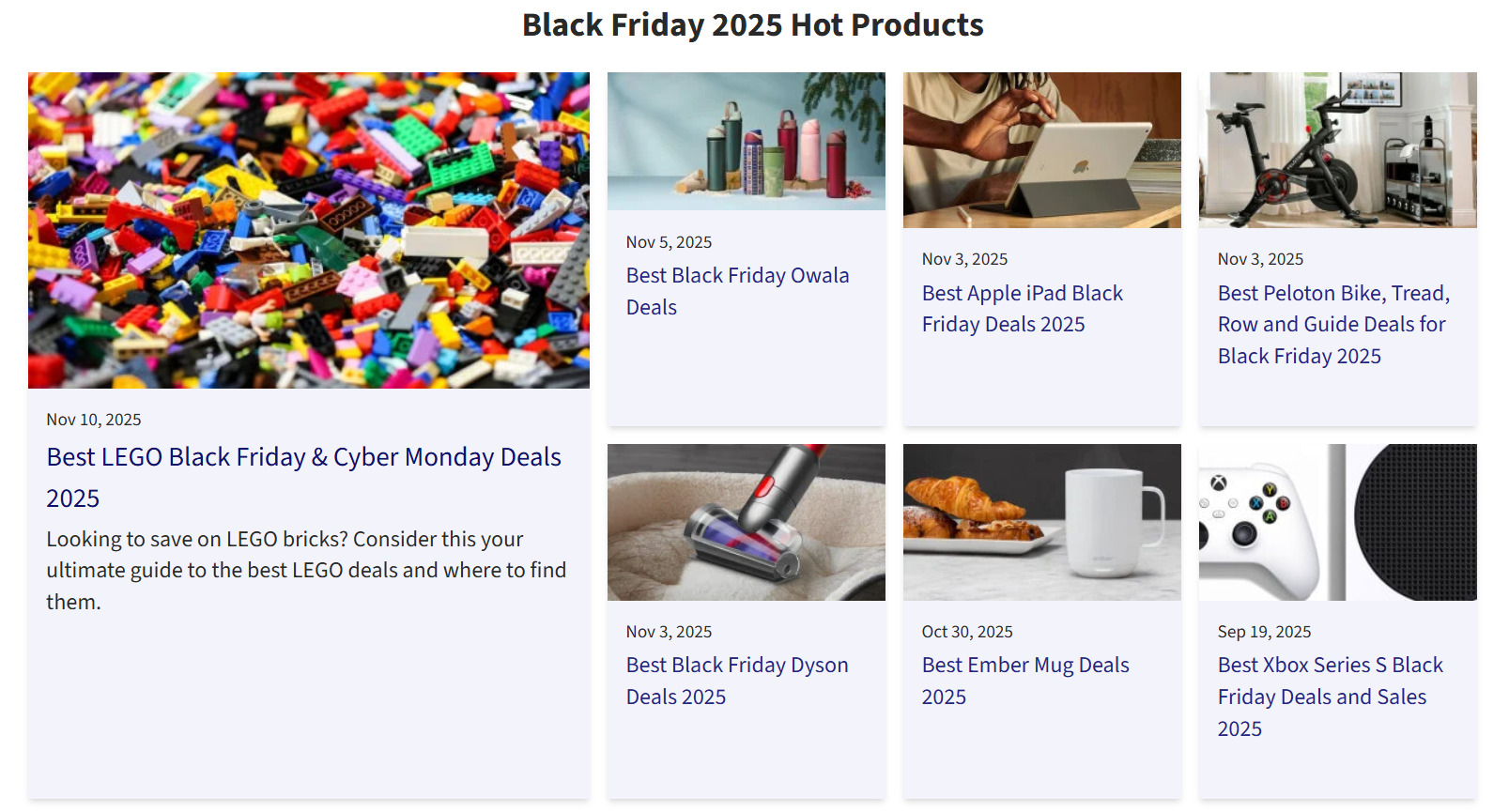
Keep your pitch factual, not overly promotional. Editors and journalists want specifics – discount percentages, timeframes, product categories. Include a link to your target page, and you'll gain both traffic and SEO value.
Partner Content and UGC: Leveraging Social Proof
Shoppers trust other people more than brands. Reviews, unboxing videos, and recommendations often outperform traditional ads. Use this to your advantage – involve partners, influencers, and your own customers.
Partner Posts
Collaborate with relevant bloggers or influencers to cover your promotions. An honest review or a "top picks" list feels more authentic and draws quality visitors.
UGC (User-Generated Content)
Encourage buyers to share their purchases: reviews, photos, and short videos. Create a branded hashtag for the event. People love showing off their deals, and this acts as free marketing.
UGC builds trust and can improve your click-through rate in search results. Real customer photos on a product page often increase time on page and reduce bounce rates.
Social Media, Chatbots, and Email: Direct Engagement Channels

Social platforms and email let you connect with your audience directly. Unlike organic search, you can prompt immediate action.
Social Media
Post a series of short, punchy updates highlighting specific deals and deadlines. Use stories, reels, and polls to build excitement. Always link straight to your landing pages or sale categories.
Chatbots
Set up a bot on Telegram, WhatsApp, or Facebook to notify subscribers when the sale starts. It's convenient – users get an alert and can jump right to your site.
Email Campaigns
Send a sequence of three emails:
- A "sale coming soon" teaser 3–5 days beforehand.
- A "it's live!" announcement on day one.
- A "last chance" reminder as the sale winds down.
Include countdown timers, promo codes, and links to popular categories.
These channels don't just drive traffic – they keep your audience engaged. It's a powerful way to reconnect with past visitors and keep them from shopping elsewhere.
Leave Link Building to the Pros
A strong backlink profile is a major ranking signal. But building it right – especially under time pressure – is tough. Consider handing this task to experts.
If you want to maximize your Black Friday SEO for eCommerce impact without the manual effort, reach out to LinkBuilder.com. Our team handles everything from vetting sites to placing links and tracking performance.
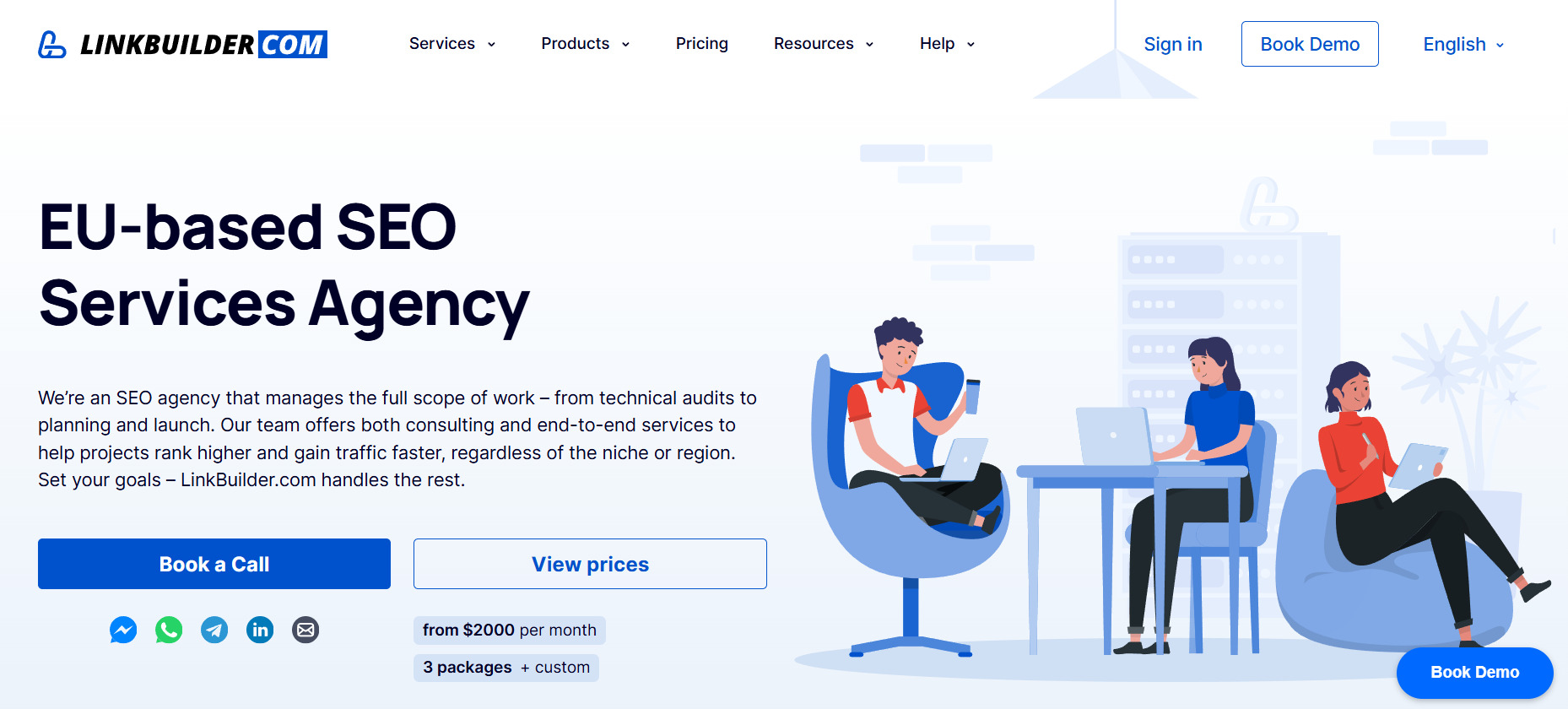
We can assist with:
- A full Black Friday SEO audit to find and fix technical issues holding you back.
- A customized SEO strategy based on your niche and competition.
- Strategic link placement that actually drives results.
- Sourcing placements on relevant, high-traffic sites.
- Refreshing content and meta tags to boost CTR and attract qualified traffic.
- Building brand visibility via media features and collaborative content.
A thoughtful link-building strategy strengthens your rankings and supports your SEO goal to increase traffic on Black Friday. When reputable sites talk about your offers, search engines see your site as an authority – and rank you faster than competitors.
Final Pre-Launch Checklist and Day-of Execution
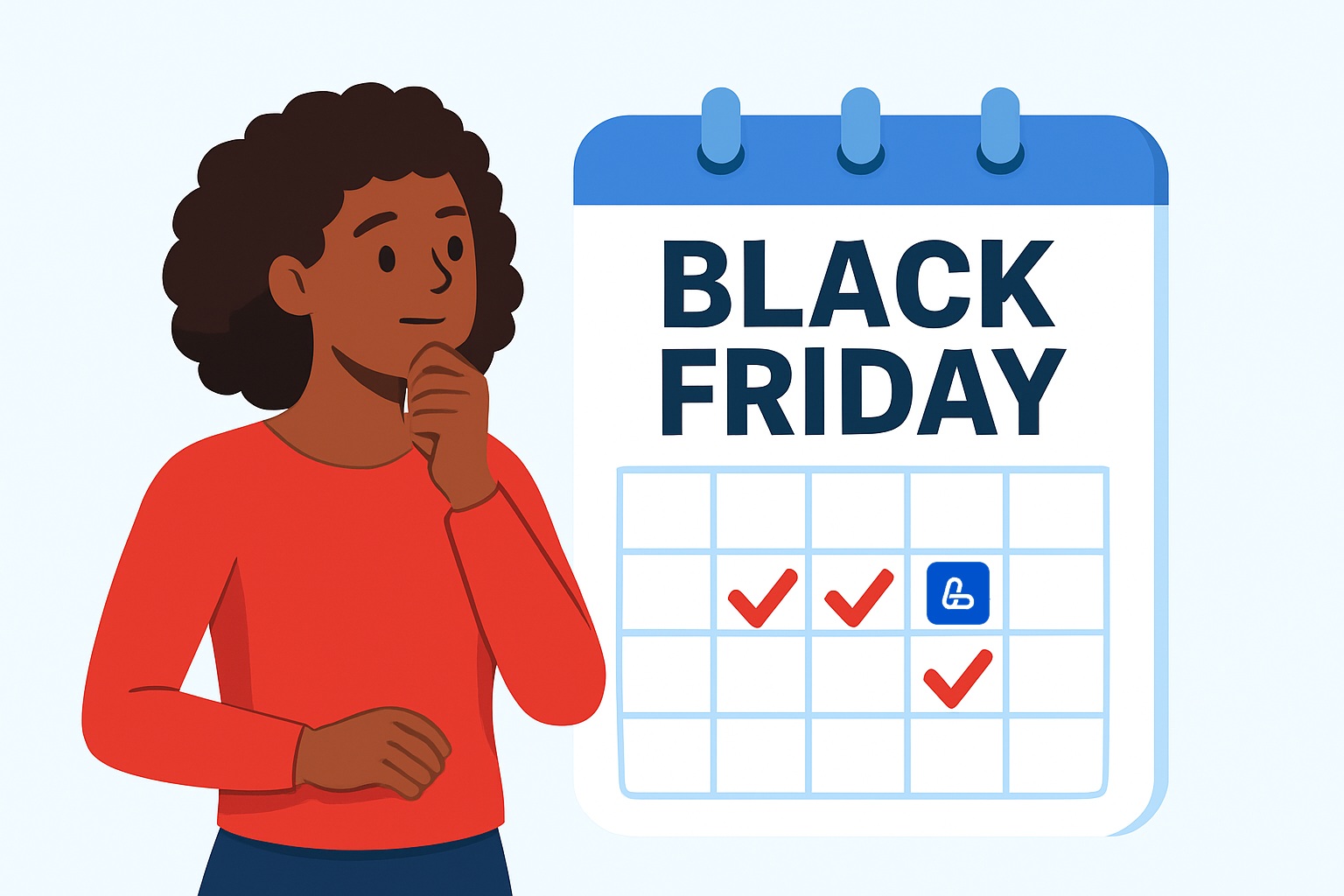
When Black Friday is just days away, everything needs to run smoothly. Keep this final checklist close to avoid losing sales to easily preventable issues.
Last-Minute Checks: One Week Before
Run through this Black Friday SEO checklist at least once before the sale begins:
- Confirm site speed. Recheck Core Web Vitals. Even a one-second delay can cost sales.
- Test mobile checkout. Go through the entire purchase process on a phone: buttons, cart, payment.
- Review meta tags. Ensure titles and descriptions highlight discounts and urgency.
- Verify internal links. Connect all sale-related pages so users can navigate seamlessly.
- Check promo codes. All coupons and special offer links should go to active, correct pages.
- Validate analytics. Confirm UTM tags and Google Analytics goals are set up properly.
- Back up your site. Save a full backup of your site and database in case of technical issues.
This prep work prevents day-of chaos. When the traffic surges, you'll know your foundation is solid.
On Sale Day: Monitor and Adapt in Real Time
Once the sale is live, stay vigilant. Your team should watch site performance closely:
- Track server load. See how your hosting handles the spike. If pages slow down, boost caching or temporarily remove resource-heavy elements.
- Catch errors quickly. Use Google Search Console and server logs to spot 404s or indexing problems as they happen.
- Watch traffic and conversions. If CTR drops, refresh your banners. If sales dip, check the cart and payment steps.
- Respond to customer queries. Answer comments and messages promptly. Quick support builds trust and saves sales.
This attentive approach helps you increase traffic on Black Friday and hold your rankings, even as competitors make their own updates.
Post–Black Friday: Keep the Momentum Going
When the peak traffic fades, your work isn't over. This is the time to turn one-time buyers into loyal customers.
A few ways to stay connected:
- Send a thank-you email with a bonus for their next purchase.
- Share sale highlights on social media – show what products were hits.
- Ask for feedback – it improves future content and builds credibility.
- Conduct a Black Friday SEO audit for next year – note what worked and what didn't.
This helps retain traffic and sets you up for next season.
Key Takeaways
Black Friday SEO isn't a one-off project – it's part of a long-term strategy. Brands that start early see steady growth that lasts beyond the sale.
If your site needs a technical review, content updates, or a stronger link profile, now's the time. Audit your site, refresh your pages, add seasonal keywords, and improve your structure.
To move faster and avoid missteps, book a free consultation with LinkBuilder.com. We'll help you build a Black Friday SEO strategy, improve your rankings, and get your site ready for the holiday rush.
